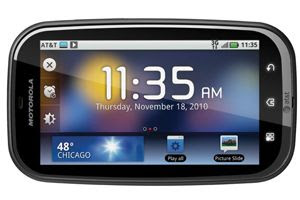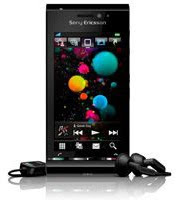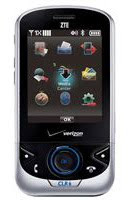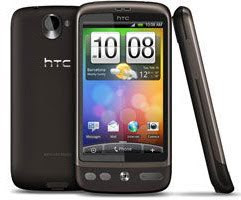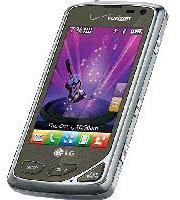IIPM Excom Prof. Rajita Chaudhuri's Profile
Munich (Germany)-based Florian Müller is an award-winning IPR activist with 25 years of software industry expertise spanning across different market segments and a variety of technical & commercial areas. Müller was perhaps amongst the first IPR experts to accuse Google of copying code from Oracle for its Android OS. He shares his opinions on the subject with B&E.
B&E: Many questions have been raised over copyright issues related to Android OS. How big are these problems for Google and the handset makers?
Floriam Müller (FM): They are a big problem for Google, but a far bigger one for its device makers. Most of the time it is the device makers who get sued, not Google. There are a few cases in which Google itself is named as a defendant, most notably Oracle’s lawsuit over seven patents and various copyrights. But for the most part it’s the device makers’ problem. Indirectly, that turns it into a problem for Google because if the intellectual property situation doesn’t come under control, some device makers may drop Android. Recently there was a rumor that Motorola is developing a mobile operating system of its own. There was some speculation that Motorola – which is being sued by Apple, Microsoft and a significant number of other companies for patent infringement – could be very concerned over the intellectual problems surrounding Android as well as Google’s heavy-handed control over Android.
B&E: You mentioned that most of the time, it is the device makers who get the stick in court. Could you explain this?
FM: By my count, 42 Android-related patent infringement suits have already been filed, and only two of them (Oracle and Skyhook) target Google exclusively, while the others name device makers as defendants. Most of the time it is just device makers being dragged to court.
B&E: With the cloud of lawsuits, can Google turn Android into a cash cow?
FM: In Google’s case, the cost of resolving all of the intellectual property issues Google faces could exceed the actual revenue opportunity, possibly even by far.
B&E: If patent claims against Android build up at this rate, what is the amount we are looking for that Google might have to pay up on order of the courts?
FM: It is very hard to estimate litigation costs, but the real strategic issue for Google won’t be one-time costs such as for litigation. They will mostly be concerned about per-unit royalties that make Android-based devices more expensive, hence less competitive.
B&E: Will payouts in settling patent infringement cases show on Google’s net earnings from Android?
FM: Since Google itself is rarely sued, the impact on the net earnings of device makers will be greater than on Google’s earnings. The Oracle lawsuit could, however, require Google to pay something on the order of a billion dollars depending on the exact outcome. The extent to which Android is accused of infringement is unpredecented. 42 lawsuits in a little more than a year show that there are fundamental problems. There are definitely some Android-specific reasons, such as Google’s ‘loose management’ of intellectual property issues, that contribute greatly to this mess.
B&E: Some have even pointed to security issues related to the Android OS. Is that something which handset makers and buyers should be wary of?
FM: By emphasising that the software is “free”, Google positioned Android as the poor man’s iPhone. But the security issues come with it. The Android Market is not managed well by Google. It contains programs infected by malware. I use a Samsung Galaxy, a high-end Android phone, and I like it for the most part, but I don’t have confidence in Google’s app store and never buy anything there.
B&E: Android Market Place is not giving Google enough topline push. Are the earnings enough to sustain stable Android OS projects in future?
FM: App stores can but only be a small part of a revenue mix. In Google’s case, there’s not enough money to be made there to sustain development of an OS.
B&E: Finally, will the Andoird connection enable handset and tablet makers like HTC, Samsung, LG, Dell, Acer et al, to make money in times to come?
FM: There are about three dozen device makers who have adopted Android by now and it’s clear to me that when growth rates flatten, most of them won’t make money with Android-based devices anymore. For now the explosive growth of the smartphone market creates some short-term opportunities, but strategically those device makers are in a difficult position because Google controls the platform. Google bullies Android device makers and forces them to do what it wants. Right now the biggest problem for makers of Android-based tablet makers is a lack of demand. Android tablets are a failure so far. They also turn out to be too expensive.
Visit below mentioned IIPM articles.
IIPM Professor Rajita Chaudhuri
Rajita Chaudhuri's tips to start a new trend in Market
Arindam Chaudhuri on his third National Award and his unique business formula for films
IIPM: Indian Institute of Planning and Management
Professor Arindam Chaudhuri - A Man For The Society....
Dr Malay Chaudhuri, Founder Director IIPM, tells TSI why the IIPM Awards are in a league of their own
Katrina Kaif: A British Indian Actress Born on July 16, 1984
IIPM Professor Arindam Chaudhuri's Achievements
 |
| Florian Müller, Founder, FOSS Patents & Co-founder of Rival Networks |
Munich (Germany)-based Florian Müller is an award-winning IPR activist with 25 years of software industry expertise spanning across different market segments and a variety of technical & commercial areas. Müller was perhaps amongst the first IPR experts to accuse Google of copying code from Oracle for its Android OS. He shares his opinions on the subject with B&E.
B&E: Many questions have been raised over copyright issues related to Android OS. How big are these problems for Google and the handset makers?
Floriam Müller (FM): They are a big problem for Google, but a far bigger one for its device makers. Most of the time it is the device makers who get sued, not Google. There are a few cases in which Google itself is named as a defendant, most notably Oracle’s lawsuit over seven patents and various copyrights. But for the most part it’s the device makers’ problem. Indirectly, that turns it into a problem for Google because if the intellectual property situation doesn’t come under control, some device makers may drop Android. Recently there was a rumor that Motorola is developing a mobile operating system of its own. There was some speculation that Motorola – which is being sued by Apple, Microsoft and a significant number of other companies for patent infringement – could be very concerned over the intellectual problems surrounding Android as well as Google’s heavy-handed control over Android.
B&E: You mentioned that most of the time, it is the device makers who get the stick in court. Could you explain this?
FM: By my count, 42 Android-related patent infringement suits have already been filed, and only two of them (Oracle and Skyhook) target Google exclusively, while the others name device makers as defendants. Most of the time it is just device makers being dragged to court.
B&E: With the cloud of lawsuits, can Google turn Android into a cash cow?
FM: In Google’s case, the cost of resolving all of the intellectual property issues Google faces could exceed the actual revenue opportunity, possibly even by far.
B&E: If patent claims against Android build up at this rate, what is the amount we are looking for that Google might have to pay up on order of the courts?
FM: It is very hard to estimate litigation costs, but the real strategic issue for Google won’t be one-time costs such as for litigation. They will mostly be concerned about per-unit royalties that make Android-based devices more expensive, hence less competitive.
B&E: Will payouts in settling patent infringement cases show on Google’s net earnings from Android?
FM: Since Google itself is rarely sued, the impact on the net earnings of device makers will be greater than on Google’s earnings. The Oracle lawsuit could, however, require Google to pay something on the order of a billion dollars depending on the exact outcome. The extent to which Android is accused of infringement is unpredecented. 42 lawsuits in a little more than a year show that there are fundamental problems. There are definitely some Android-specific reasons, such as Google’s ‘loose management’ of intellectual property issues, that contribute greatly to this mess.
B&E: Some have even pointed to security issues related to the Android OS. Is that something which handset makers and buyers should be wary of?
FM: By emphasising that the software is “free”, Google positioned Android as the poor man’s iPhone. But the security issues come with it. The Android Market is not managed well by Google. It contains programs infected by malware. I use a Samsung Galaxy, a high-end Android phone, and I like it for the most part, but I don’t have confidence in Google’s app store and never buy anything there.
B&E: Android Market Place is not giving Google enough topline push. Are the earnings enough to sustain stable Android OS projects in future?
FM: App stores can but only be a small part of a revenue mix. In Google’s case, there’s not enough money to be made there to sustain development of an OS.
B&E: Finally, will the Andoird connection enable handset and tablet makers like HTC, Samsung, LG, Dell, Acer et al, to make money in times to come?
FM: There are about three dozen device makers who have adopted Android by now and it’s clear to me that when growth rates flatten, most of them won’t make money with Android-based devices anymore. For now the explosive growth of the smartphone market creates some short-term opportunities, but strategically those device makers are in a difficult position because Google controls the platform. Google bullies Android device makers and forces them to do what it wants. Right now the biggest problem for makers of Android-based tablet makers is a lack of demand. Android tablets are a failure so far. They also turn out to be too expensive.
Visit below mentioned IIPM articles.
IIPM Professor Rajita Chaudhuri
Rajita Chaudhuri's tips to start a new trend in Market
Arindam Chaudhuri on his third National Award and his unique business formula for films
IIPM: Indian Institute of Planning and Management
Professor Arindam Chaudhuri - A Man For The Society....
Dr Malay Chaudhuri, Founder Director IIPM, tells TSI why the IIPM Awards are in a league of their own
Katrina Kaif: A British Indian Actress Born on July 16, 1984
IIPM Professor Arindam Chaudhuri's Achievements



